Photo report: UG heritage accessible worldwide
What do photos of archaeological excavations have in common with books in the Groninger language? Or a hand-drawn map from the late Middle Ages with a goniometer from the depot of the University Museum? They are all part of the rich history and collection of the UG. But they will also soon all be available to view and study online. With the Spotlight project, the UG is digitizing over 100,000 objects from its heritage. This photo report reveals some of the work done behind the scenes.
Spotlight. The name suggests attention for a few highlights from the rich UG collection. In reality, however, this concerns 100,000 objects, divided over six subprojects. Opening the collection up and making material accessible to people outside of the University, to everyone, are reasons that often come up during a tour of the Spotlight work. That is what drives the participants in this major digitization operation – students, volunteers, project leaders: making material available so that others can enjoy it, or even use it in their research. Because digitization is about much more than opening things up to the public: it provides new insights and new research opportunities. ‘We are contributing to teaching and research. The material is more valuable when it is used.’
Precision work
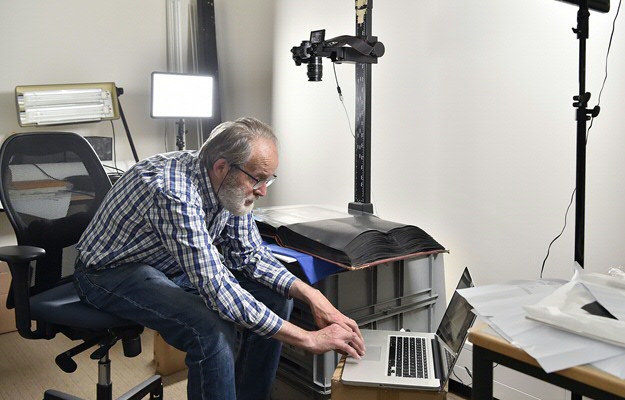
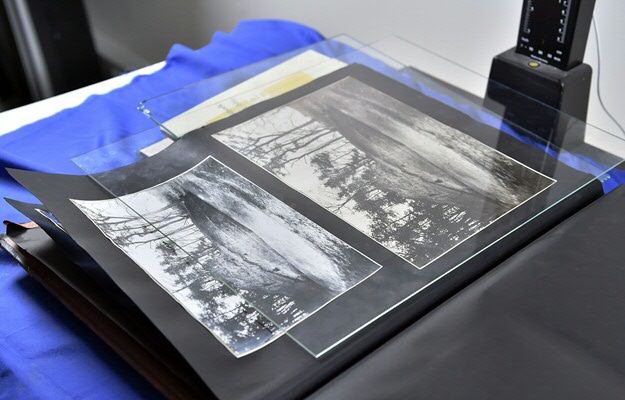
In a small darkroom upstairs in the University Library, Dirk Fennema is digitizing photos from excavations that took place a hundred years ago, of which no negatives exist. On an improvised table lays a large book with black, warped pages and pasted-in photographs. A glass plate on top of a photograph ensures that it remains flat. Two large, bright photo LED lamps focus on the book. Over the book, a camera hangs from a tripod, facing downwards. A computer screen next to the set-up displays the photo. Fennema can use grid lines to see if it is straight. A colour-coding system ensures that the photo is taken exactly as it is.
New insight into old excavations
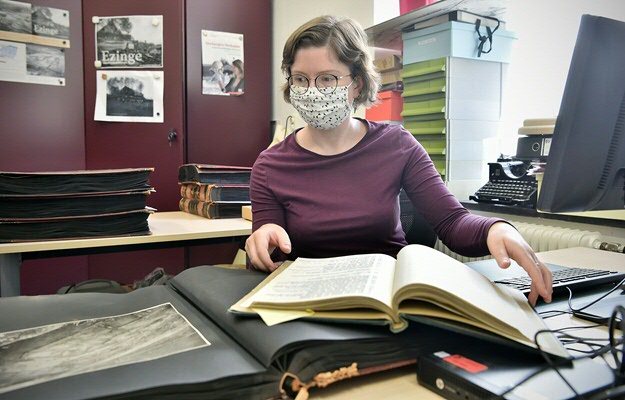
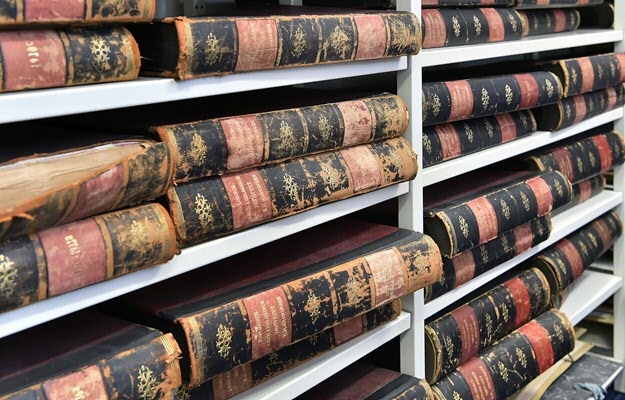
Fifty-four large books with photographs of excavations are on display at the GIA: large, old photographs that have old-fashioned glass plates as negatives. They are being digitized and provided with a description and other data by student assistant Rhea Buijs. The photos will soon be enormous: around 500 MB each. This makes it possible to zoom in and re-examine an archaeological site. Kirsten van der Ploeg of the GIA: ‘For archaeologists, this is not just a photograph. This is a source, it is research data. You can carry out new research with it. So many photographs have been taken that people never see. We want to publish them with a Creative Commons licence. That fits in with the UG’s Open Science policy.’
Maps and books pre-1614
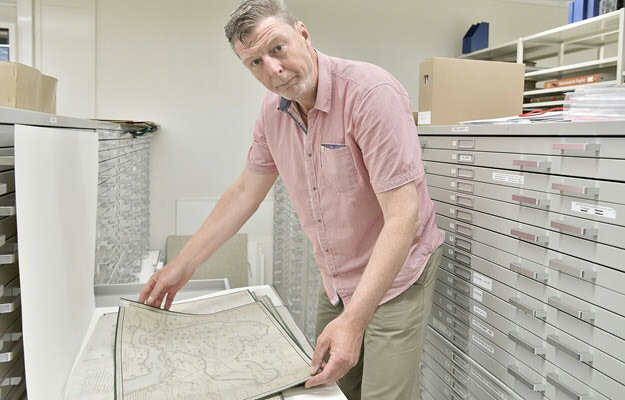
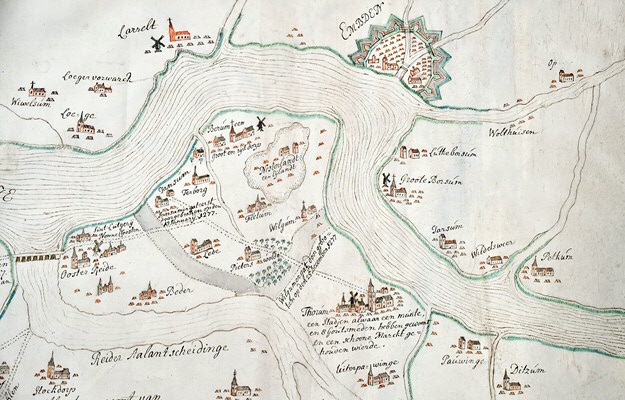
Maps, printed and handwritten books... All the material in the University Library from before 1614 is being digitized here. This amounts to about 5,000 objects, according to Adrie van der Laan, curator of Special Collections. Why 1614? Van der Laan: ‘Primarily because it allows us to show how rich intellectual life here was before the UG was founded in 1614. The foundation of the UG is, as it were, a crowning achievement.’ He opens a drawer with a map of the Oldambt region before the storm tides swept away villages and created the Dollard Bay ‘Completely hand-drawn, a copy such as this one is unique. Once it is digital, we want to link it to other media, so that people get more insight into the history of the region. There is so much here that interests people. At the moment, not enough people are making use of these treasures.’
Archiving websites
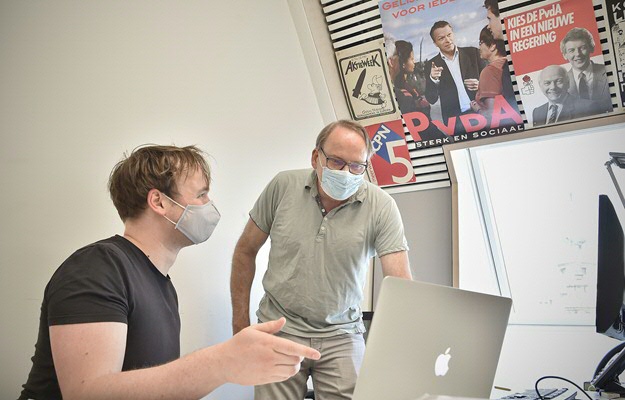
Two student assistants are working for the Documentatiecentrum Nederlandse Politieke Partijen (DNPP) on archiving political websites. They are implementing a system for archiving political party websites. At the same time, old archives are being converted to a new, open, standard. A challenge, because the old archives were made with different software versions. The student assistants have to write a conversion tool themselves.
Capturing the Groninger language
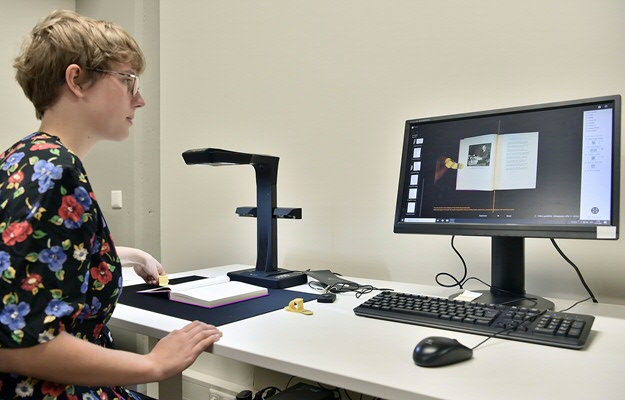
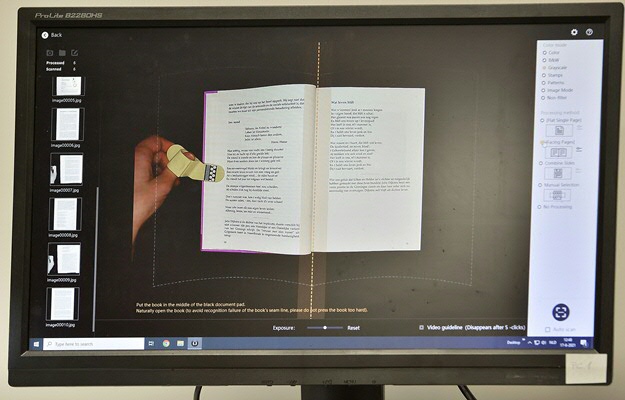
The Centre for Groningen’s Language and Culture is digitizing 800 Groningen books, from the 18th century to the present. With a click on a foot pedal, student assistants – such as Hedwig Sekeres – and volunteers scan the works, after which the image is converted into computer text. After checking for possible errors in the digital text and adding metadata, a corpus is created, a digital database of the Groninger language, which provides insight into the use and spelling of words and the changing of language throughout the centuries.
A goniometer in front of the lens in the University Museum depot
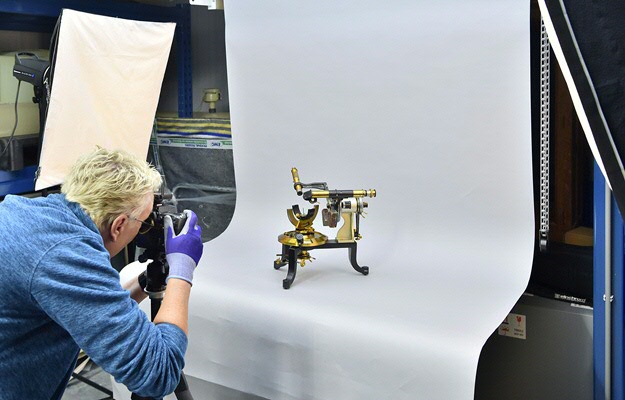
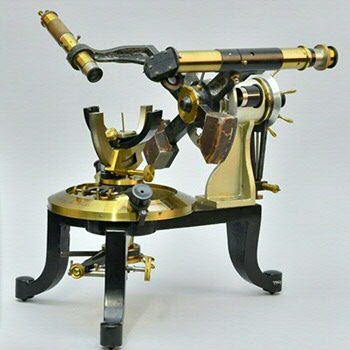
No photographs or texts at the University Museum depot... Here, Ciska Ackermann is photographing small and large objects in order to be able to catalogue them in a better way and to make them digitally available. Whether it‘s a spear, a rock or a microscope, one by one they are put on a small cart and brought to the spot where Ackermann is shooting. Now, she has come to this goniometer that used to belong to Professor Van Calker. With it, the mineralogist was able to determine the type of crystal by measuring the corners of the crystal using the light and its reflection. Van Calker bought the instrument in 1902 for about 400 Dutch guilders, which was almost a monthly salary for a professor in those days. A copy of the receipt has even been preserved in the Dagregister (Daily Register) of the former Mineralogical Geological Institute.
Text: Eelco Salverda, Communicaton UG / Photos: Elmer Spaargaren
More news
-
15 September 2025
Successful visit to the UG by Rector of Institut Teknologi Bandung
